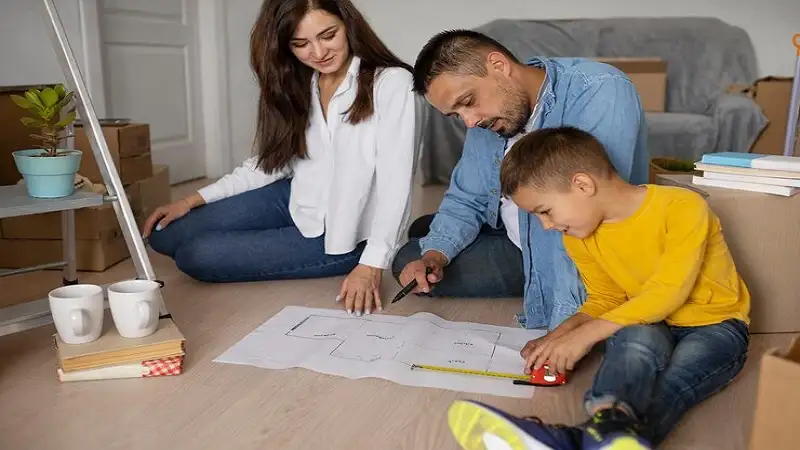1. Understanding the Importance of Home Safety
Before diving into specific tips, it is crucial to grasp why home safety is necessary for every household. Home is where people should feel the safest, yet many homes are rife with hazards like electrical issues, falls, and fires. According to the National Safety Council, home-related injuries cause more deaths than all natural disasters combined. This statistic underscores the need to make safety a priority.
Creating a secure environment not only protects loved ones but also fosters peace of mind. By investing time in home safety training, you equip your family with the knowledge to prevent accidents, respond to emergencies, and minimize risks. Additionally, many insurance policies offer lower premiums for homes with safety measures in place, making it a financially sound decision.
2. Fire Safety Measures
Fire hazards are one of the most common and deadly threats in a home. Every household should have a fire safety plan, and it should be practiced regularly. Below are essential fire safety steps to implement:
- Install Smoke Detectors: Ensure smoke alarms are installed in key areas like bedrooms, kitchens, and hallways. Regularly test the batteries to ensure they are working.
- Create a Fire Escape Plan: Every family should have an escape route in case of fire. Identify at least two exits from each room and practice the escape plan with all family members.
- Use Fire Extinguishers: Know the location of fire extinguishers in the home and train everyone on how to use them. Make sure fire extinguishers are regularly serviced and up to date.
- Avoid Overloading Electrical Outlets: Overloading outlets can lead to electrical fires. Use power strips where necessary, and never plug too many devices into a single outlet.
By teaching every family member how to recognize and address fire hazards, the likelihood of a fire-related emergency diminishes significantly.
3. First Aid Basics for Every Family Member
Accidents happen, and being prepared with basic first aid knowledge can make a massive difference in an emergency. A first aid kit should be easily accessible in every home, and all family members, including children, should know how to use it.
- Stock a First Aid Kit: Include items like adhesive bandages, antiseptic wipes, gauze, scissors, tweezers, and over-the-counter medications. Regularly check the kit to replace expired or used items.
- Teach CPR and the Heimlich Maneuver: These life-saving techniques can be crucial during choking or cardiac emergencies. Many organizations, such as the Red Cross, offer certification courses that can teach these skills in a few hours.
- Responding to Burns, Cuts, and Bruises: Teach family members how to deal with minor injuries, such as applying cool water to a burn or elevating a limb to stop bleeding. Quick responses to such injuries can prevent further complications.
First aid knowledge empowers family members to act swiftly and confidently in the event of an accident.
4. Childproofing and General Household Safety
Childproofing is essential for families with young children. From sharp edges to poisonous substances, a home can pose many risks to toddlers and infants. However, general household safety extends beyond childproofing and applies to every member of the family.
- Secure Furniture and Appliances: Top-heavy furniture and appliances can tip over and cause serious injury, especially to small children. Use furniture anchors to secure items like bookshelves and televisions to the walls.
- Store Hazardous Substances Safely: Cleaning supplies, medications, and sharp objects should be kept out of reach or locked away. Label hazardous items clearly to avoid accidental use.
- Cover Electrical Outlets: Prevent curious little fingers from getting shocked by covering electrical outlets with safety plugs.
- Install Safety Gates: Use safety gates at the top and bottom of stairs to prevent falls, especially for children and elderly family members.
By taking these precautions, you reduce the chance of injury and create a safer living environment for everyone.
5. Home Security and Emergency Preparedness
In addition to physical safety, protecting your home from break-ins and other external threats is vital. Ensuring that your home is secure provides an additional layer of protection for your family.
- Install Security Systems: Home security systems, whether professionally monitored or DIY, are an excellent deterrent against burglars. They can also alert you to emergencies such as fires or carbon monoxide leaks.
- Secure Doors and Windows: Make sure all doors and windows are equipped with sturdy locks. Consider installing deadbolts for added security, and reinforce sliding glass doors with a rod or additional locking mechanism.
- Know Emergency Numbers: Keep emergency contact information readily available, including phone numbers for local fire departments, hospitals, and police stations.
- Create a Communication Plan: If family members are separated during an emergency, a communication plan ensures everyone knows where to go and who to contact.
These security measures reduce the risk of home invasions and prepare your family to act efficiently if a crisis occurs.
6. Water Safety in and Around the Home
Water-related accidents, especially drowning, are a leading cause of injury and death, particularly among children. Implementing proper water safety measures can help prevent these tragic incidents.
- Supervise Children Near Water: Whether it’s a pool, bathtub, or even a bucket of water, never leave young children unattended. Designate an adult to supervise during bath time or swimming sessions.
- Install Pool Fences: If you have a pool, install a fence with a self-latching gate to prevent unsupervised access. Ensure that the fence is at least four feet high to deter children from climbing over it.
- Use Non-Slip Mats in Bathrooms: Wet floors in the bathroom can cause falls. Place non-slip mats in bathtubs and around the bathroom to reduce the risk of slipping.
Water safety awareness significantly reduces the potential for accidents, making it an essential part of any family’s home safety training.
7. Kitchen Safety for the Whole Family
The kitchen is often the heart of the home, but it’s also one of the most hazardous areas due to sharp tools, hot surfaces, and the potential for fires. Establishing kitchen safety rules can help protect everyone.
- Teach Safe Knife Handling: Show children and adults alike how to properly use and store knives. Keep sharp objects out of reach from small children.
- Use Pot Handles Safely: Always turn pot handles inward when cooking to prevent accidental spills. Hot liquids can cause severe burns, so it’s essential to minimize the risk.
- Supervise Cooking: If children want to help cook, always supervise their actions closely. For younger children, focus on safer tasks such as washing vegetables or stirring cool ingredients.
Creating a safe cooking environment ensures that mealtime doesn’t lead to unnecessary accidents or injuries.
8. Carbon Monoxide and Gas Leak Prevention
Carbon monoxide (CO) poisoning and gas leaks are silent threats that can be deadly if not detected in time. Installing proper detection systems can safeguard your family from these invisible dangers.
- Install CO Detectors: Carbon monoxide is odorless and invisible, making it undetectable without the help of a CO detector. Place detectors near sleeping areas and fuel-burning appliances, and test them regularly.
- Know the Signs of a Gas Leak: A rotten egg smell can indicate a natural gas leak. If this odor is detected, leave the house immediately and contact emergency services.
- Ventilate Gas Appliances Properly: Ensure gas-powered appliances like stoves and water heaters are installed and vented correctly to prevent CO buildup in your home.
Taking these precautions can protect your family from life-threatening hazards that might otherwise go unnoticed.
9. Safety Drills: Practicing What You’ve Learned
Once your family is familiar with the various safety procedures, it’s important to put that knowledge into practice. Regular drills ensure everyone knows what to do in an emergency and can act without hesitation.
- Hold Fire Drills: Practice your fire escape plan at least twice a year. This includes getting out of the house, meeting at a designated safe spot, and accounting for all family members.
- Practice Emergency Evacuations: In case of natural disasters like earthquakes or floods, rehearse how to evacuate the home and seek safety. Ensure each family member knows how to turn off utilities like water and gas.
- Teach Age-Appropriate Responsibilities: For children, assign age-appropriate roles during drills, such as helping younger siblings or grabbing the first aid kit. This builds confidence and teamwork in emergencies.
Regular safety drills help ensure that everyone is prepared and able to respond effectively in an emergency.
10. Incorporating Technology for Enhanced Home Safety
Modern technology has made it easier than ever to enhance home safety. From smart locks to automated lighting, there are various tools available to provide additional layers of protection.
- Smart Locks and Cameras: These devices allow you to monitor and control your home’s security remotely. You can lock doors, view cameras, and receive alerts through a smartphone.
- Automated Lighting Systems: Use smart lighting to keep your home well-lit when you’re away, deterring potential intruders. You can program lights to turn on at specific times or use motion sensors.
- Remote Monitoring Apps: Many security systems allow you to monitor your home in real-time. If an alarm is triggered, you’ll receive an instant notification on your phone, allowing you to take immediate action.
Incorporating technology into your home safety routine can greatly improve your ability to protect your family from both internal and external threats.
Conclusion
Home safety is an ongoing process that requires participation from every member of the family. By implementing fire safety measures, mastering first aid, securing the household, and practicing regular drills, you can create a safer living environment. The key to success is consistent training, preparation, and communication. With these easy home safety tips, your family will be better equipped to prevent accidents, handle emergencies, and enjoy peace of mind in a secure home.

